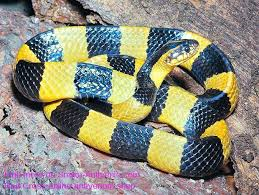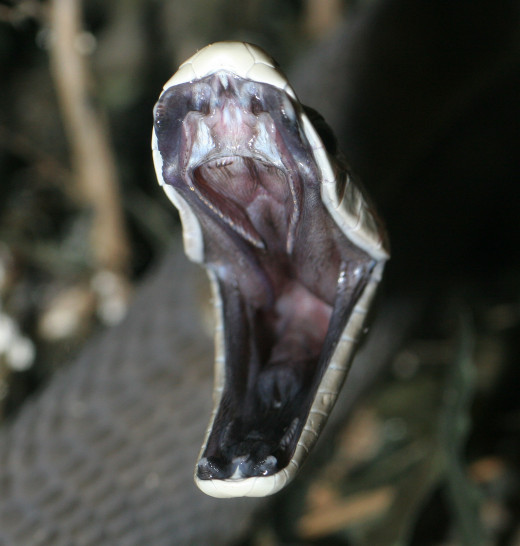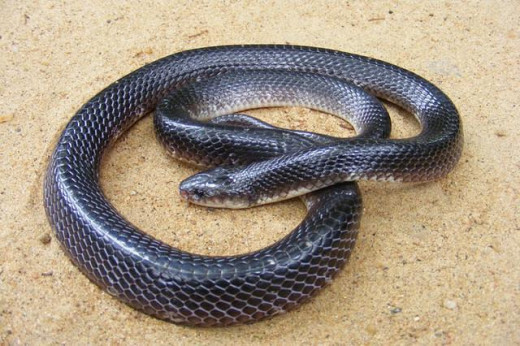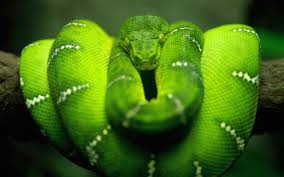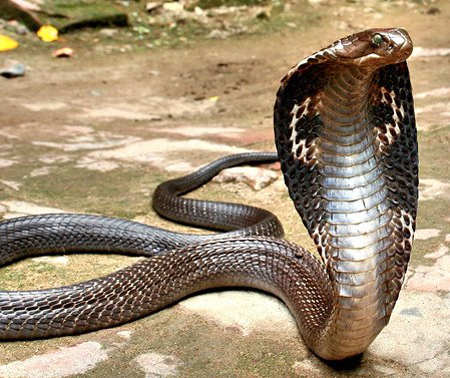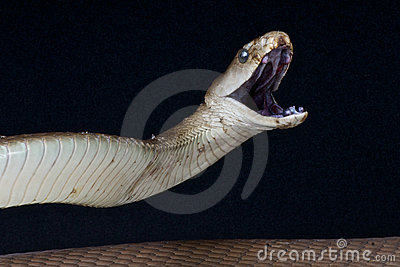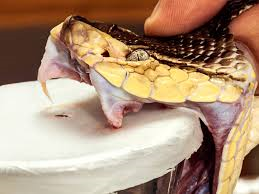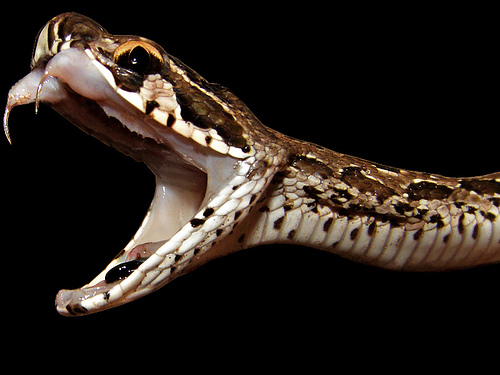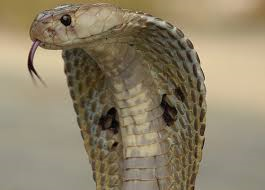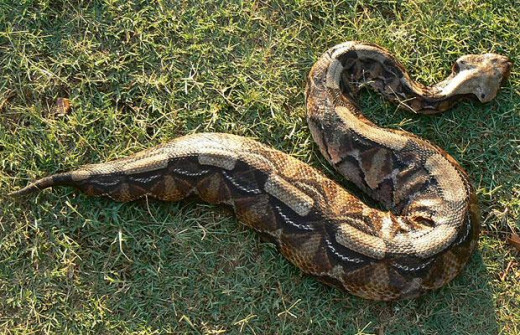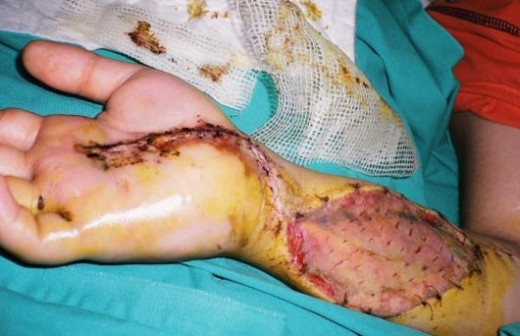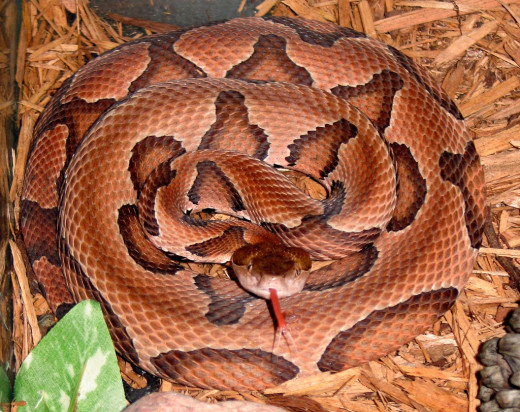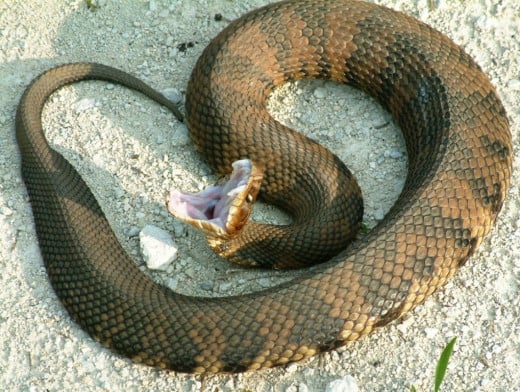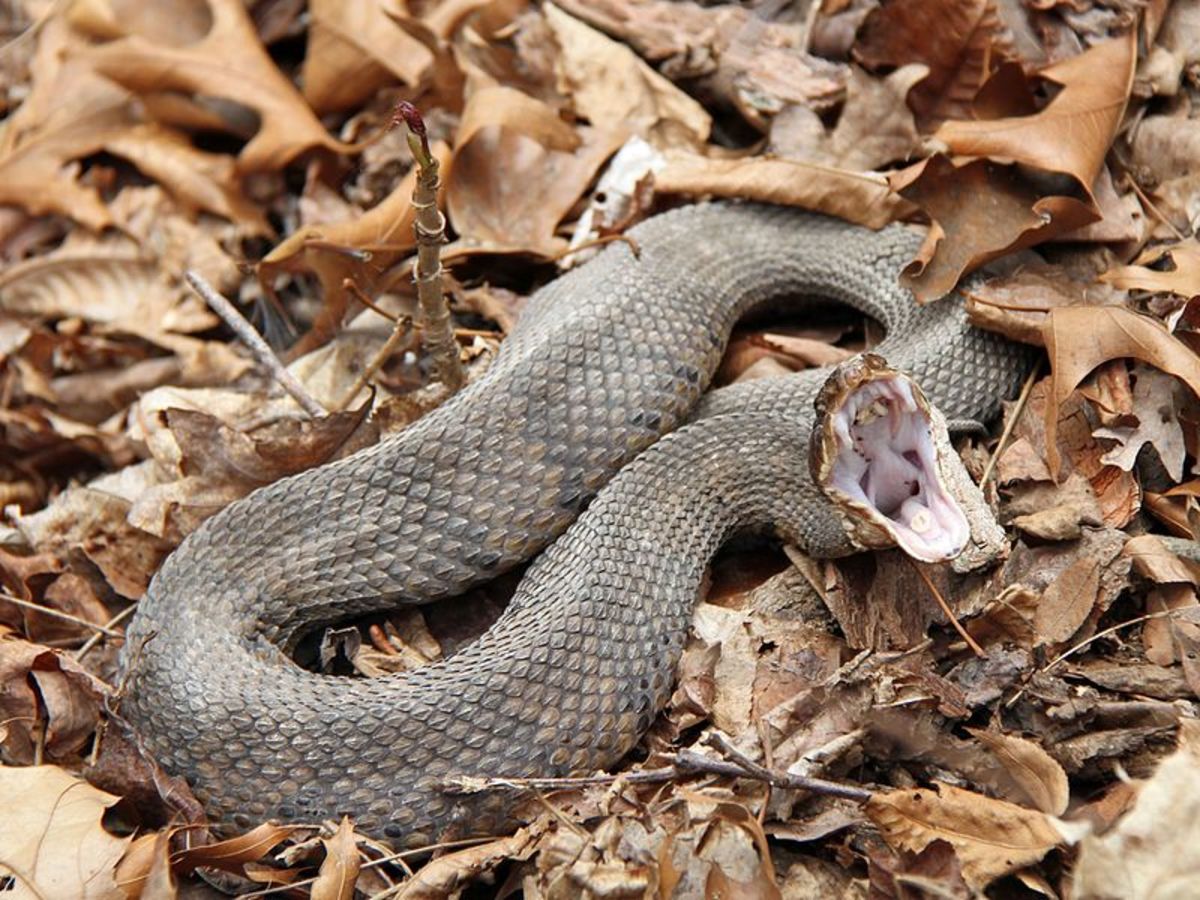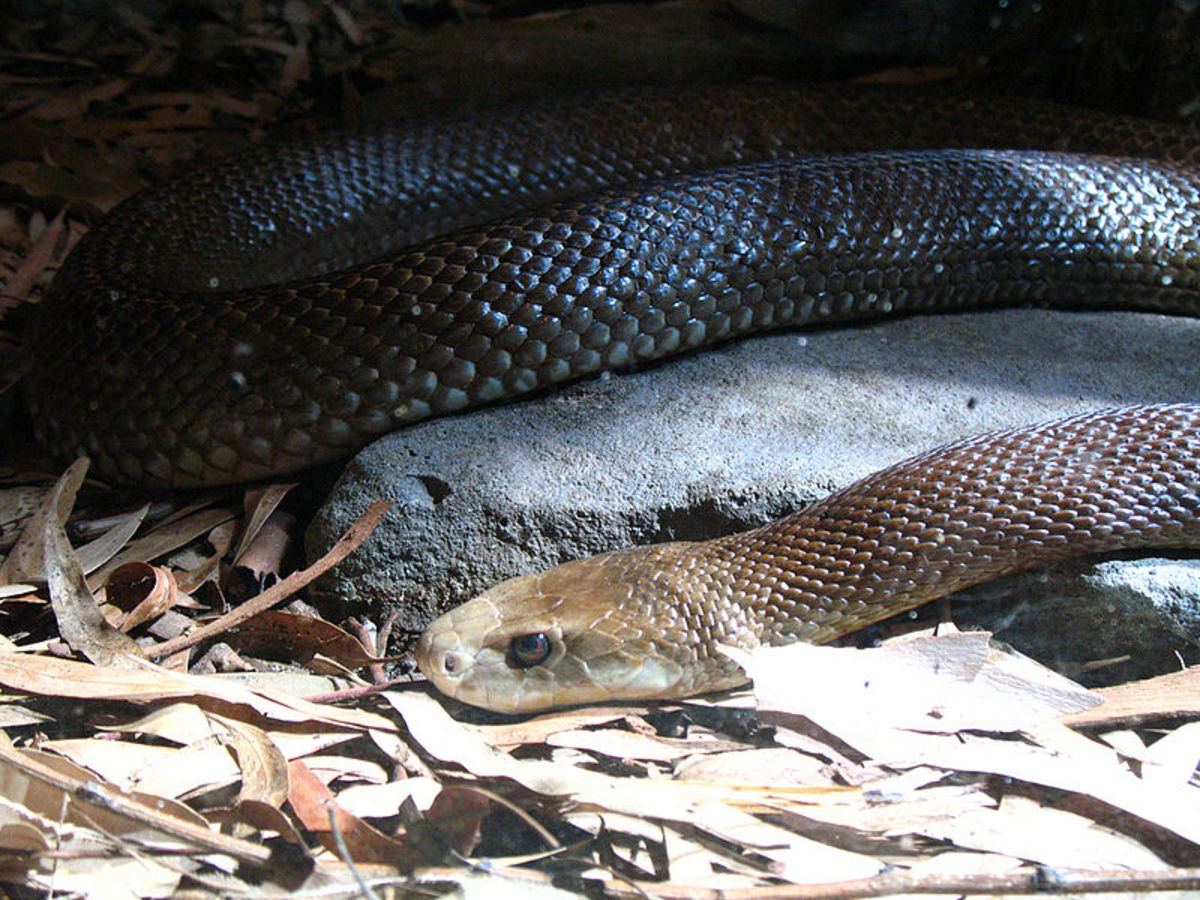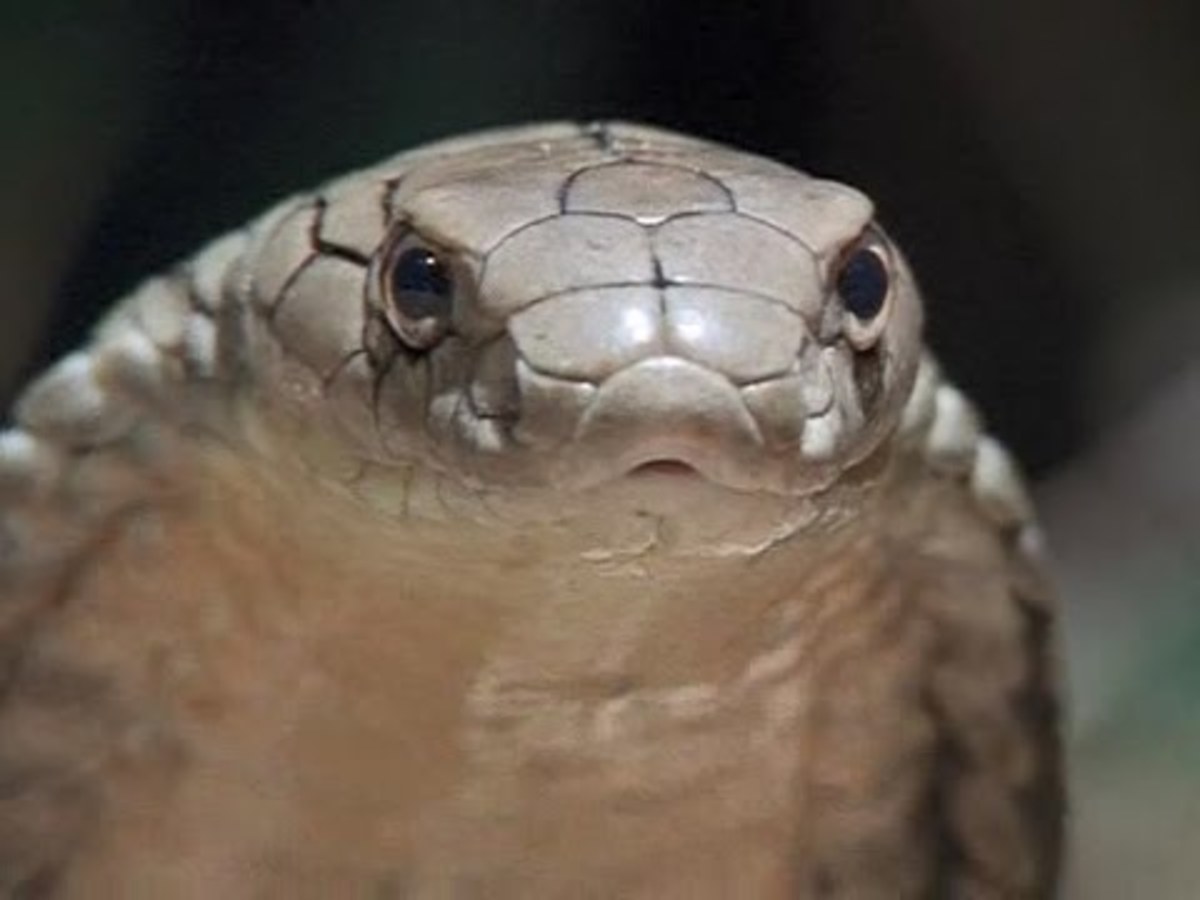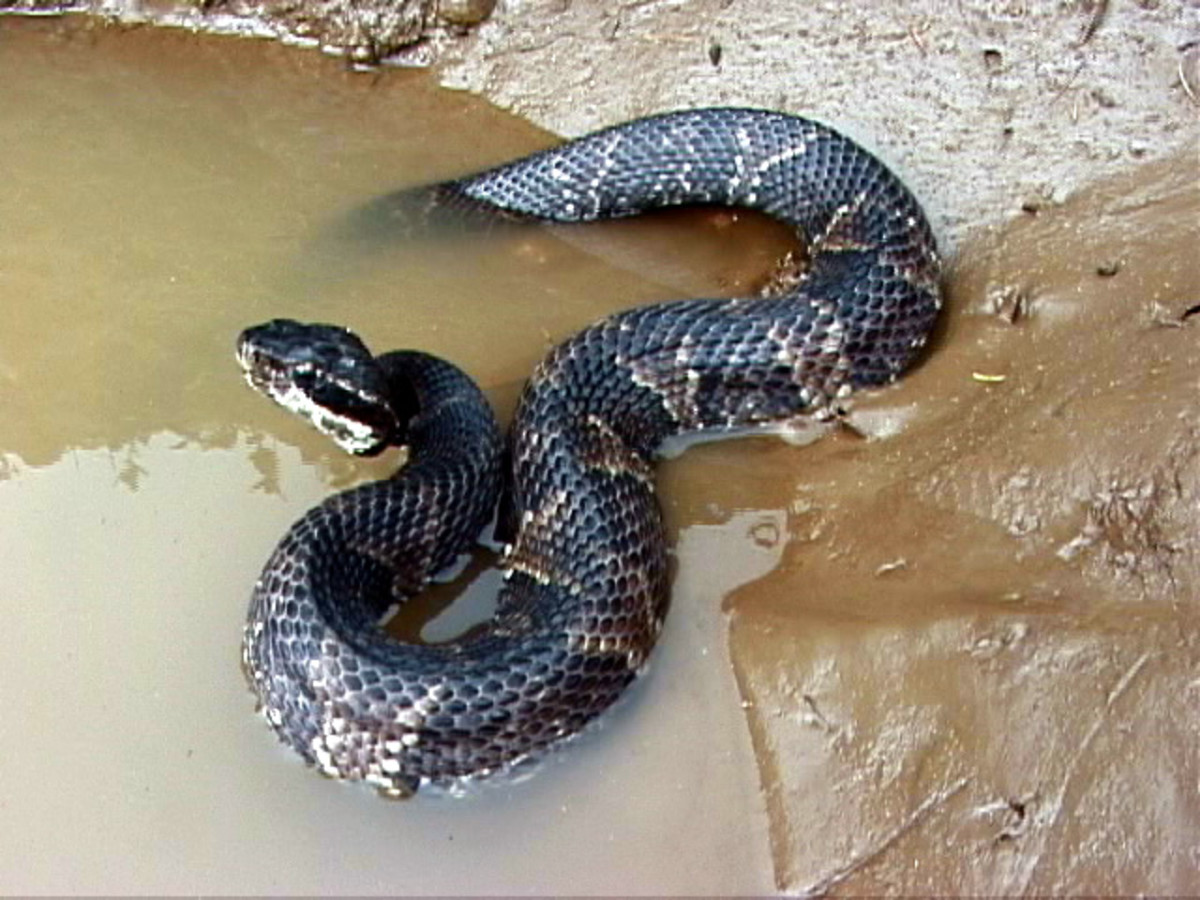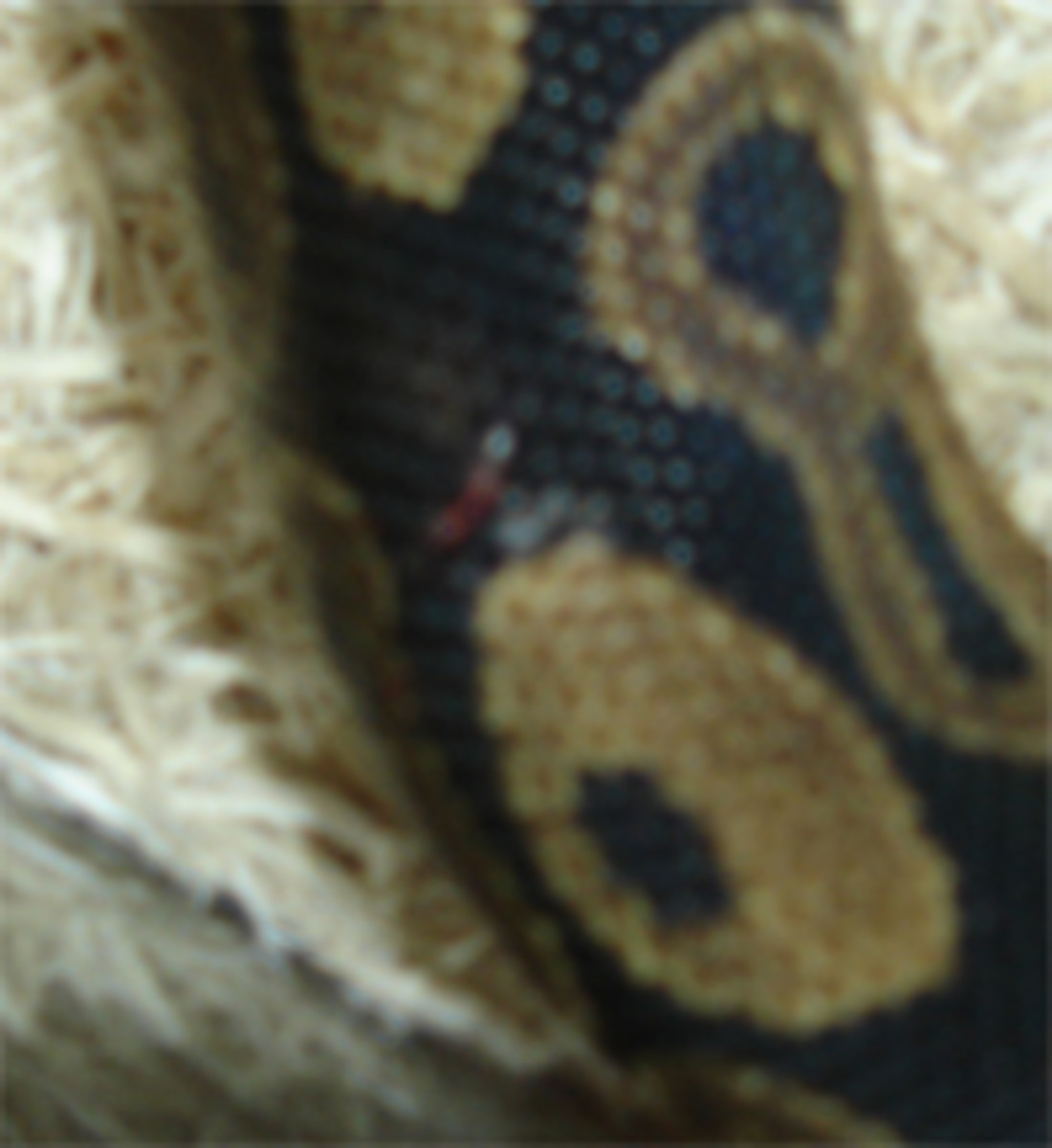India's Alarming Snake-Bite Fatalities
The Usual Suspects in Death Toll in Asia and World
Click thumbnail to view full-size












Snakes help curb world population!
India's Alarming Snake-Bite Fatalities.
Imagine if the UK, the USA or even Australia – with more venomous snakes than any other continent – were reporting 250,000 bites from venomous snakes per year, 50,000 of which proved fatal!
This is the true and alarming state of affairs in India, despite herpetologists working with laboratories and producing gallons of anti-venom said to be efficacious in treating bites from the “Big Four,” the serpents responsible for 80% of the deaths.
India is charitable to all its domestic and wild creatures. It reveres the Indian Cobras, for example, (of which there are three species). The people fear yet admire the world's largest venomous snake, the King Cobra, and while they don't treat this majestic snake with the familiarity of the more common and much smaller cobras, the snake and residents who meet it generally pass by on an amicable footing. Luckily, for a creature that possesses sufficient venom in one bite to kill 20 adult humans and one large elephant!
Of about 2000 species of snakes world-wide, India has 272, 80% of which are non-venomous. That leaves 58 species which are venomous.
King Cobras seem to possess perhaps more intelligence than other reptiles; they rarely bite humans, although they hiss like a dog growling and raise themselves 6 feet from the ground, shake-out that famous hood, watching you eye-to-eye, so to speak. This gorgeous creature is an enemy to most other snakes; feeds commonly on non-venomous snakes and will even kill and devour large venomous specimens as well. They could easily be described as having a noble nature, rather like the king of beasts, the lion. Victims who do get bitten seriously by the 'King will not live without fast treatment.
Note I said “seriously.” Herpetologists have found out fairly recently that snakes biting for defence don't inject usually all their venom, or as much as they do to kill large prey. Many victims have survived because of this diffidence from the reptile.
So the “Big Four,” those providing the chilling statistics throughout India.
They are the Indian Cobra, the Common Krait, Russell's Viper and the nasty natured Saw-Scaled Viper.
Yes, there is an anti-venom available to treat all four, individually or, poly-covalently, all at once.
Yet thousands are still dying in agony, in hospitals as well as away from medical help in the rural tea and rice plantation areas.
One reason for this, say experts, is the venom for a given species at one end of the country may vary so sufficiently to necessitate changes in the anti-venom – rather as virus can mutate or change in other was needing a different course of treatment.
Most deadly bites occur at night as rural dwellers wander around without light and foot covering to the outhouse, etc., and step on a hunting snake causing it to bite hard defensively. The Russell's and Saw-scaled vipers are high on the list of usual suspects in these cases.
Kraits are especially lethal. Their neurotoxic venom is the second most venomous in the world – 10 times stronger that that of the cobras – and there seems to be a lot of evidence to say they bite victims while they are sleeping.
The Russell's Viper is no slouch in the venom department – number 5 in the world – and one of the fastest striking snakes of all: it and the Saw-scale tend to bite to kill and both are active at night. The large and strong Russell's will take any prey is believes it can overcome and swallow, including cats and small dogs, rather like the non-venomous python diet...they possess a large volume of available venom!
One well camouflaged specimen adding to the death toll is the beautiful Green Viper which tends to live in areas like tea plantations where it will bite any hand or foot is sees as a threat. Aren't these amazing stats, though? Add the deaths to those lost on India's killer roads, it's a wonder their birthrate is still soaring as it is. Nothing can stop man's suicide by procreation it seems!
The country with the most venomous snakes is Australia. Yet there are only a couple of fatalities per year there! The world's most venomous snakes, along with the African Mambas, are the Taipans, yet there has only been relatively few deaths from these two species. The Brown and Tiger snakes are the pair responsible for the most deaths in history.
The main reason, perhaps, is the fact that Aussies live in five large population centres and the Aboriginal rural population was probably much more of a danger to the snakes than they were to the Bushmen! (Hurry home, Roo, mum's cooking Taipan tonight!).
Curiously, on the whole, the Australian snake's fangs are shorter than their Asian brothers and they inject far less venom. This may be due to the fact snakes have little predation on them in Oz., and their prey is substantially smaller, taking less venom to subdue. (Old world tarantulas and scorpions have worse venom than New World species!).
Also, anti-venom was patented early in Australia and efficiently administered nation-wide. There have only been 53 deaths from all snakes in Oz. In the period 1979 to 1999. For all that, the word “Taipan” strikes fear into all whom live in that country!
Sub-Saharan Africa is the next worse case after India with a sobering 32,000 deaths PER YEAR. (The USA averages 7 deaths year on year).
There are some extremely lethal serpents in Africa, including the world's most venomous, the terrifying and ferocious Black Mamba. (The snake is not black; the inside of it's mouth is). The worst in volume of fatalities, as in India, is our pal, the Saw-Scaled snake. The Mambas and the Saw-Scale, as well as others, strike to kill, strike several times with lightning speed, and tend to release all their venom (up to 600 mg in the larger species – enough to kill a football team!). This accounts for the high percentage of fatalities with these snakes – up to 60% across the board. If you are bitten by a Taipan (unlikely) or a Black Mamba (not so unlikely) you will die, 99% of the time without treatment, in hours.
Witch doctors must account for adding to many deaths. Their treatment often consists of cutting into filthy, swollen limbs; toes and fingers, and smothering the bite site with dung, assuring the victim of secondary infection.
It amazes me how Africa's population still increases all the time with the predation by crocodiles (1000's per year), death by snake, scorpion and spider bites, along with diseases carried by mosquitoes and reduuvid (Tsetse Fly Trypansiamosis), HIV, Ebola, political assassinations, starvation, filthy water, drowning in the Med., and all the rest. I would head for Europe, too!
Snakes rarely single-out man for early death. Their strikes are defensive and most seek to deter rather than injure. The exceptions are mothers guarding eggs or young, and the most common cause of snakebite, bare feet treading on a hunting snake at night. Indians and Africans, etc., surely know of the danger but still continue to ignore the risks.
Snakes are found in all areas of the globe except the Antarctic, (no venomous snakes in New Zealand). Even the UK has it's Adder, a viper with a nasty venom which has rarely resulted in death.
The US has its Rattlesnakes (vipers) and its Copperheads and Moccasins, etc., but none who are generally “out to get ya!” Anti-venom is available everywhere and good after care and most people are wary and stay clear of the occasional serpent in their way. Most of the US witch doctors are confined to plastic-surgery clinics!
The also-rans:
African Horror Show
The Black Mamba, also fastest snake and can move faster than you can run at 12 mph!
Puff Adder. Causes more deaths than any other, equal to Saw-Scaled..
Boomslang. Short, fat, large fangs and lots of venom
Gabon Viper. 2-inch fangs, longest of all venomous snakes, highest venom storage as well.
South American Menace.
This continent has none of the most venomous snakes, but many that can kill you if untreated.It does have one serpent whose name strikes fear into all who must venture into deep jungle areas. This is the “Silent Bringer of Death,” the Bushmaster. Very aggressive and territorial, as well as being the second largest venomous snake in the world. High incidence of fatality due to insistence of attack and distance from clinical aid. Specimens up to 14 feet have been recorded and it employs haemotoxin delivered by 1 ¼ inch fangs.
The most venomous of all?? Some Sea Snakes, luckily timid and peaceful. Note: The venom from box jellyfish and Blue Ringed Octopus are worse than any land reptile...sea prey moves fast and needs potent venom to control, and you need a good jolt to keep a Great White off ya!
Notes from Wikipedia: Antivenom (or antivenin or antivenene) is a biological product used in the treatment of venomous bites or stings. Antivenom is created by milking venom from the desired snake, spider, insect, or fish. The venom is then diluted and injected into a horse, sheep, rabbit, or goat.
Answering Comments re: Water Moccasins, (also called Cottonmouth)
Several US readers have spoken about this member of the Pit Viper family. The name cottonmouth comes from the white interior of mouth seen while defending.
Bites from this snake are rare and also rarely result in death, although the nasty cytotoxic venom can cause a host of woes from renal failure to limb necrosis. (it is not neurotoxic though). They are semi-aquatic and fairly territorial. Often confused with the less dangerous Copperhead.
Many harmless Watersnakes (which usually dive and swim away rather than stand their ground) have been mistaken for Moccasins and stoned by the mob!
Leave snakes alone whenever possible! They do a wonderful job in keeping down other nasties and are wonderful and beautiful! Not slimy, their skin feels like velvet. They were here first, by 150 million years and more!

